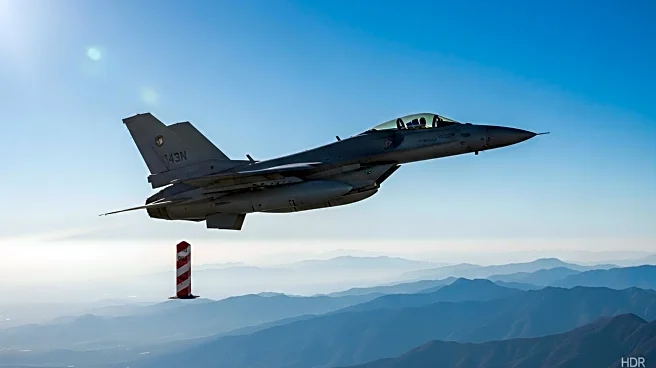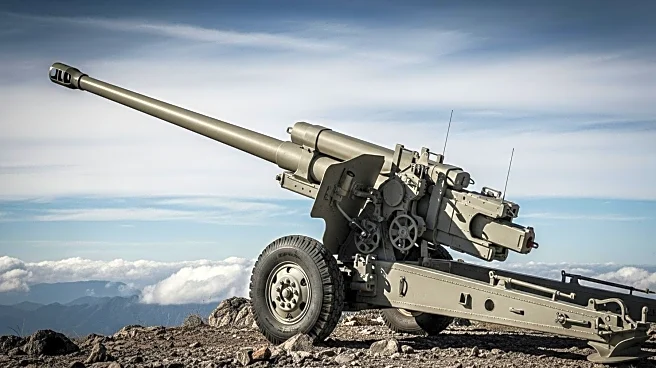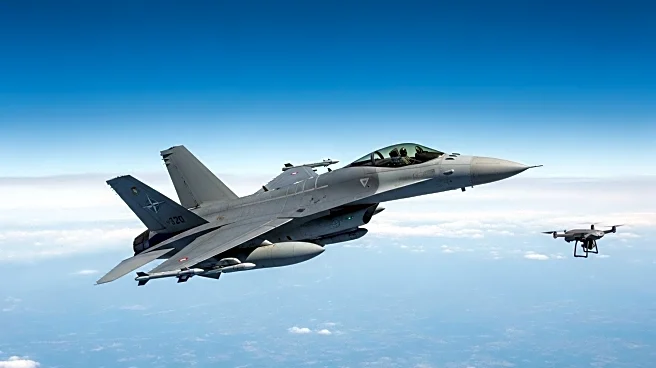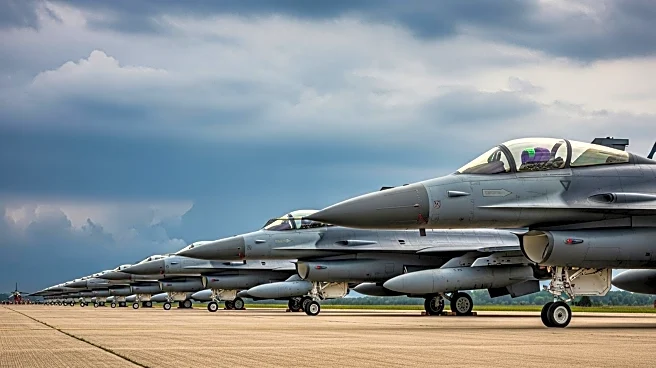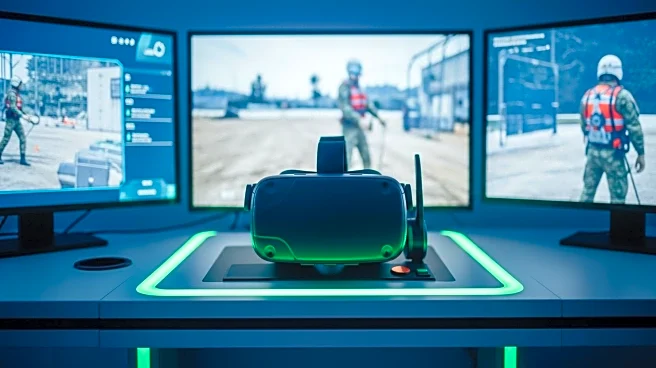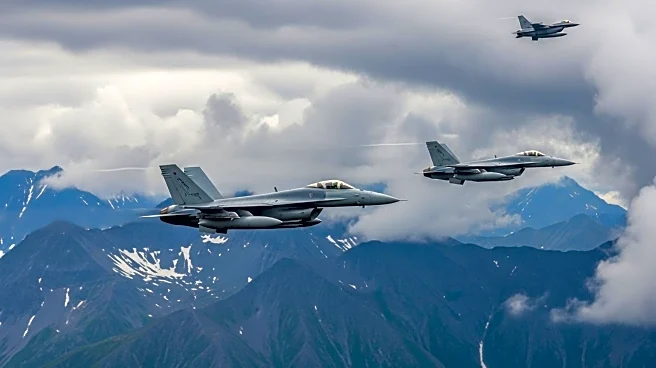What's Happening?
The U.S. Army Corps of Engineers (USACE) has commenced construction on a new training facility at Joint Base Elmendorf-Richardson in Anchorage, Alaska. This facility, named the Joint Integrated Test and Training Center - Elmendorf, is designed to support joint forces and coalition partners in executing simulated complex scenarios. The project, estimated to cost $332 million, is being undertaken by a joint venture of ASRC Builders-Caddell, which secured a contract valued at approximately $290 million. The center will feature a 150,000-square-foot, two-story building equipped with simulator rooms, briefing rooms, mission operation centers, and a central server room. The facility aims to provide a state-of-the-art environment for training in contested scenarios, enhancing military readiness in the Arctic and Pacific regions.
Why It's Important?
The construction of the Joint Integrated Test and Training Center is a significant development for U.S. defense capabilities, particularly in the strategically important Arctic and Pacific regions. By providing a modern facility for joint and multinational force training, the center will bolster military preparedness and operational effectiveness. This initiative reflects the U.S. commitment to maintaining a robust defense posture in response to evolving global security challenges. The facility's advanced simulation capabilities will enable forces to train in realistic scenarios, thereby improving their ability to respond to potential threats. The project also represents a substantial investment in infrastructure, contributing to local economic activity and employment opportunities.
What's Next?
As construction progresses, the focus will be on completing the facility to meet the specified requirements for military training. The USACE and its partners will continue to collaborate to ensure the project adheres to timelines and budget constraints. Upon completion, the training center is expected to become a pivotal asset for U.S. defense operations, facilitating enhanced training exercises and strategic planning. Stakeholders, including military leaders and defense analysts, will likely monitor the project's impact on military readiness and regional security dynamics. The successful execution of this project may also pave the way for similar initiatives aimed at strengthening U.S. defense infrastructure.
Beyond the Headlines
The establishment of the Joint Integrated Test and Training Center may have broader implications for U.S. military strategy and international relations. As geopolitical tensions in the Arctic and Pacific regions continue to evolve, the facility could play a crucial role in shaping U.S. defense policies and alliances. Additionally, the project underscores the importance of technological advancements in military training, highlighting the need for continuous innovation to address emerging security challenges. The center's focus on simulated scenarios reflects a shift towards more sophisticated training methods, which could influence future military training programs and doctrines.

